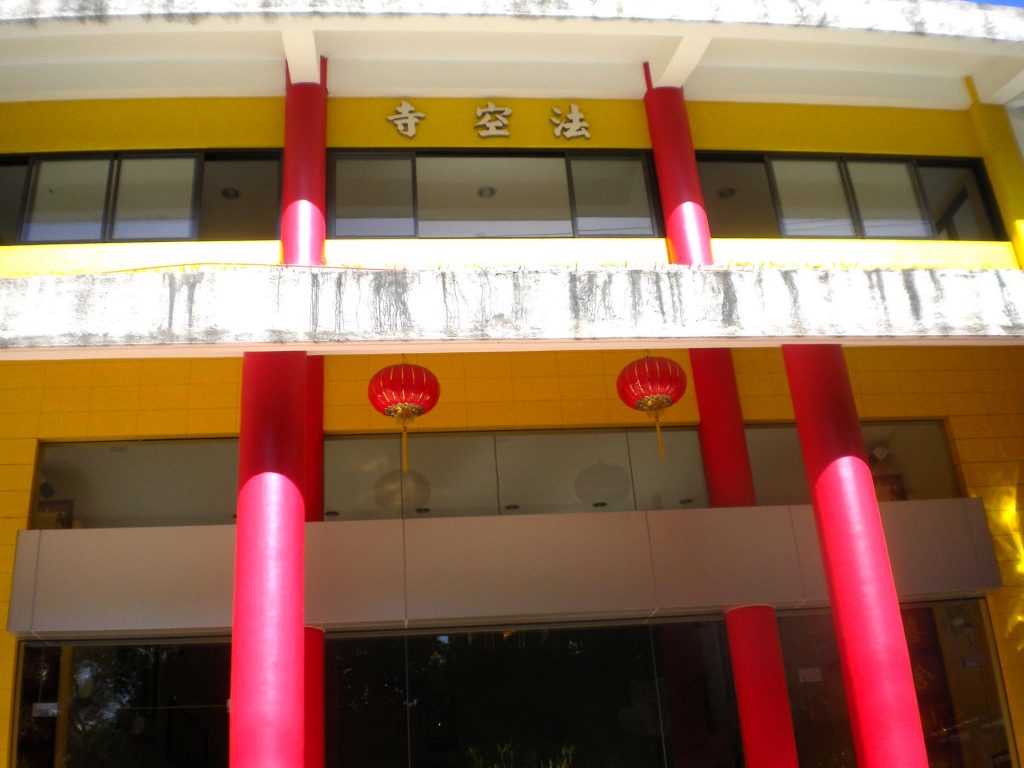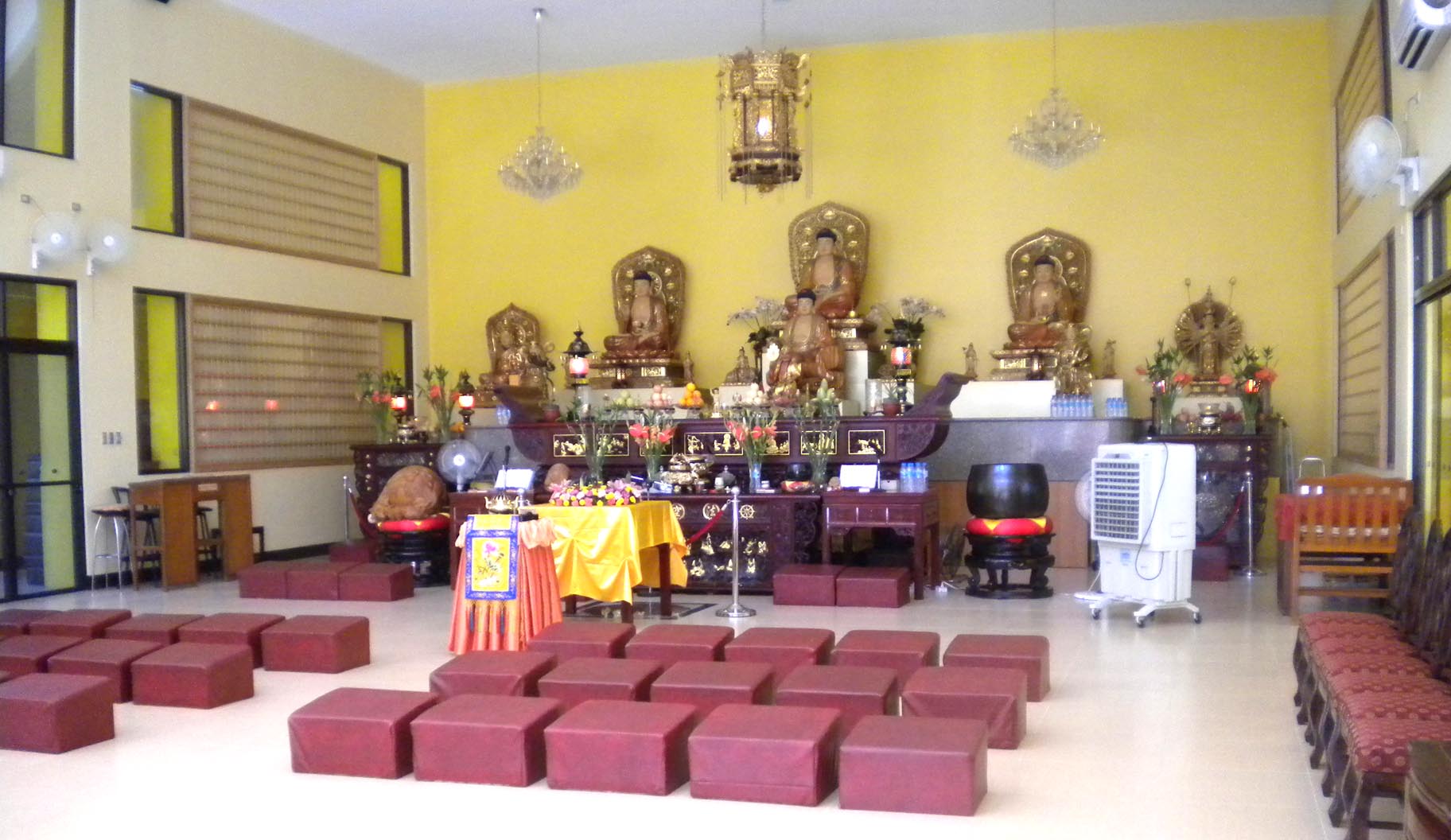Editors Note: This is the seventh of a series about the 36 (not 26 as earlier published) Chinese Buddhist temples of the Philippines. Much of the information is from a thesis of Venerable Chuanmiao (Hsuan Chuang University, 2008), a Buddhist monk affiliated with the Thousand Buddha Temple in Quezon City.
7. Hwat Kong Temple (法空寺)
19 Guirayan St., Sta. Mesa, Manila
This temple formally opened in 2010. It used to be known as the Zhengfaming Buddhist Hall (正法明佛堂), opened in 2000 by devotees formerly connected to the Daoist Kim Luan Temple (金鸞御苑), and had started their own group.
In 2006, differences within the lay board of the young temple led to a split and the Chinese Buddhist side built their own temple at the present site. The other side follows Tibetan Buddhism and retained the old site on Piña Avenue.
The prime mover behind this temple is Chua Kopo (蔡科寳 Cai Kebao), a spirit medium.
Ven. Daoyuan (道元) of the Manila Buddha Temple has been guiding Chua spiritually and trying to transform the temple along more orthodox Buddhist lines.

Main buildings. There is only one air-conditioned hall, where all the usual statues can be found. Maitreya (彌勒佛 in Chinese), flanked by miniature images of the four heavenly kings, is by the main entrance.
At the hall’s central altar are the usual three Buddhas, but in front of Shakyamuni is the Zhengfaming Rulai Buddha (正法明如来), one of the Buddha’s many titles, to whom this community is specially devoted.
In front of Zhengfaming Rulai is an image of Jigong (濟公活佛), Song dynasty monk and Living Buddha. Guanyin and other main bodhisattvas are also represented. An air-conditioned dining hall can be found at the back of the main hall.
Leadership and primary activities. Chua provides consultancy services every Sunday afternoon, and devotees believe constant chanting is required to keep his spiritual powers optimal. Thus, aside from his private spiritual practice at home, the community gathers every Sunday afternoon to chant the Great Compassion dharani (大悲咒) 108 times. On other days, the community’s lay leader comes for a few hours each morning to chant the Suramgama spell (楞嚴咒).
Charitable activities are part of the community’s life. Two or three times a year they prepare food packs and distribute them to the poor, usually through Catholic institutions like the neighborhood parish. — First published in Tulay Fortnightly, Chinese-Filipino Digest 25, no. 18 (February 19-March 4, 2013): 14.
